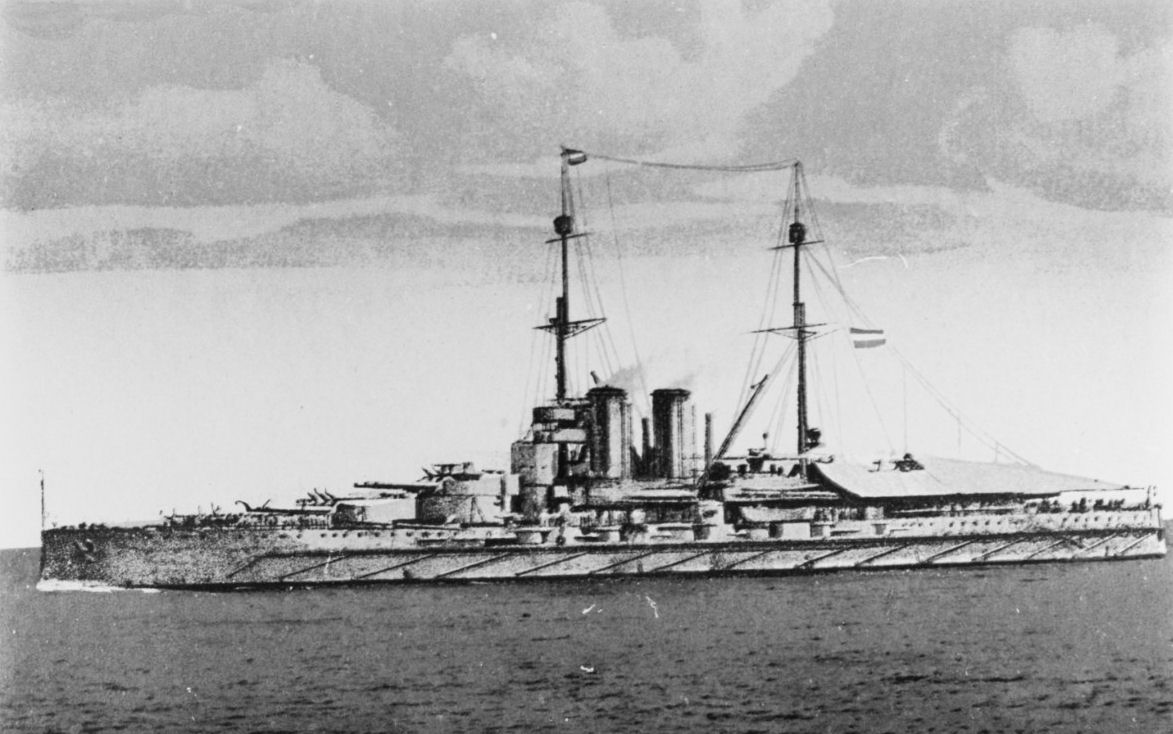Austro-Hungarian Battleship SMS Tegetthoff
SMS Tegetthoff was the second of four Tegetthoff-class dreadnought battleships built for the Austro-Hungarian Navy. Tegetthoff was named for the 19th-century Austrian Admiral Wilhelm von Tegetthoff, most notable for defeating the Italian Regia Marina at the Battle of Lissa in 1866. the ship was armed with a main battery of twelve 30.5 cm (12.0 in) guns in four triple turrets. Constructed shortly before World War I, she was built at the Stabilimento Tecnico Triestino shipyard in Trieste, where she was laid down in September 1910 and launched in March 1912.
Tegetthoff was a member of the 1st Battleship Division of the Austro-Hungarian Navy at the beginning of the war alongside the other ships of her class, and was stationed out of the Austro-Hungarian naval base at Pola. She first saw action during the Bombardment of Ancona following Italy’s declaration of war on Austria-Hungary in May 1915, but saw little combat for the rest of the war due to the Otranto Barrage, which prohibited the Austro-Hungarian Navy from leaving the Adriatic Sea. In June 1918, in an bid to earn safer passage for German and Austro-Hungarian U-boats through the Strait of Otranto, the Austro-Hungarian Navy attempted to break the Barrage with a major attack on the strait, but it was abandoned after Tegetthoff and her sister ship, Szent István were attacked by Italian motor torpedo boats on the morning of 10 June. Tegetthoff was unharmed during the attack, but Szent István was sunk by torpedoes launched from MAS-15.
After the sinking of Szent István, Tegetthoff and the remaining two ships of her class returned to port in Pola where they remained for the rest of the war. When Austria-Hungary was facing defeat in the war in October 1918, the Austrian government decided to transfer the bulk of her navy to the newly formed State of Slovenes, Croats and Serbs in order to avoid having to hand the ship over to the Allies. This transfer however was not recognized by the Armistice of Villa Giusti, signed between Austria-Hungary and the Allies in November 1918. Under the terms of the Treaty of Saint-Germain-en-Laye, Tegetthoff was handed over to Italy. She was subsequently moved to Venice before being shown as a war trophy by the Italians. During that time period she starred in the movie Eroi di nostri mari (“Heroes of our seas”), which depicted the sinking of Szent István. Following the adoption of the Washington Naval Treaty in 1922, she was broken up at La Spezia between 1924 and 1925.




















